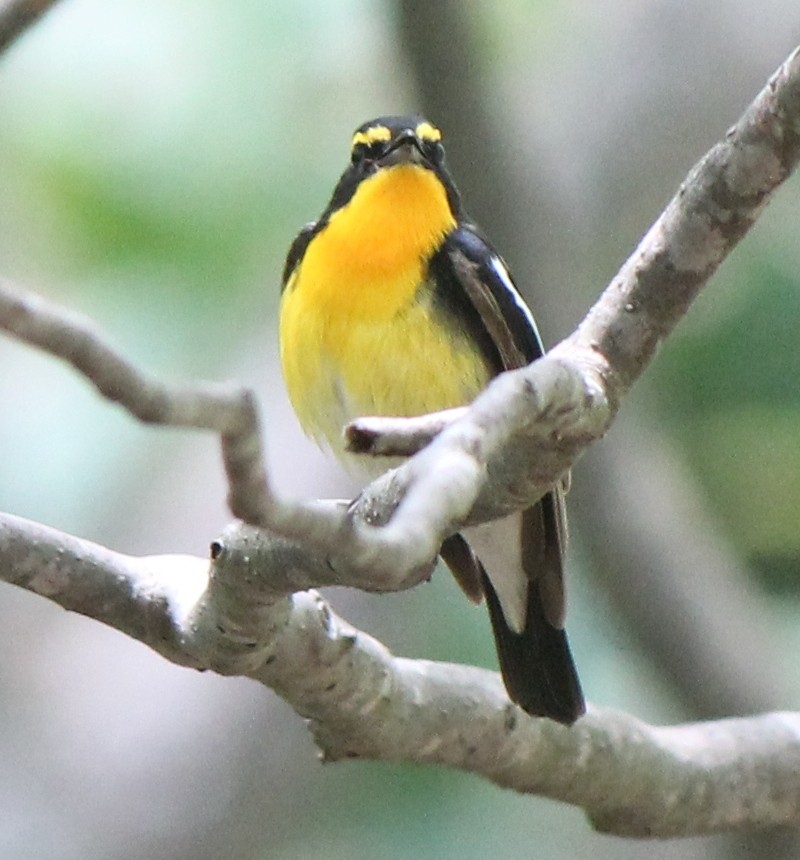Narcissus Flycatcher
A species of Ficedula Flycatchers Scientific name : Ficedula narcissina Genus : Ficedula Flycatchers
Narcissus Flycatcher, A species of Ficedula Flycatchers
Botanical name: Ficedula narcissina
Genus: Ficedula Flycatchers
Content
Description General Info
 Photo By Alpsdake , used under CC-BY-SA-4.0 /Cropped and compressed from original
Photo By Alpsdake , used under CC-BY-SA-4.0 /Cropped and compressed from original Description
The narcissus flycatcher (Ficedula narcissina) is a passerine bird in the Old World flycatcher family. It is native to the East Palearctic, from Sakhalin to the north, through Japan across through Korea, mainland China, and Taiwan, wintering in southeast Asia, including the Philippines, Vietnam and Borneo. It is highly migratory, and has been found as a vagrant from Australia in the south to Alaska in the north [1]. Narcissus flycatcher males are very distinctive in full breeding plumage, having a black crown and mantle, a bright orange throat with paler chest and underparts, an orange-yellow eyebrow, black wings with a white wing patch, an orange-yellow rump, and a black tail. Non-breeding males have varying levels of yellow. Females are completely dissimilar, with generally buff-brown coloration, with rusty-colored wings, and a two-toned eyering. This species primarily feeds on insects, and lives in deciduous woodlands. Breeding males sing in repeated melodious whistles. The green-backed flycatcher was formerly considered a subspecies. There are several subspecies, largely determined by plumage and range variations, at least of which has been split off as separate species. The Narcissus Flycatcher arrives in Southeast Asia during early May to commence mating behavior. Males arrive before females to prepare a nest that will aid in the selection of a mate as well as shelter. Due to familiarity with the ritual older males typically arrive at the area sooner than younger males. F. n. narcissina, the nominate race, found from Sakhalin south to the Philippines F. n. owstoni, a short-range migrant based in the Ryukyu Islands, breeding males have an olive-green crown and mantle instead of black The name of the bird is a reference to the yellow color of many varieties of the narcissus flower. 
Size
13 cm (5.25 in)
Colors
Black
Yellow
White
Orange
Nest Placement
Tree
Feeding Habits
Narcissus Flycatcher predominantly consumes insects, employing aerial hawking and perch hunting techniques to catch its prey, favoring a diet that varies seasonally.
Habitat
Narcissus Flycatcher thrives in a range of habitats across temperate and subtropical Northeast Asia, from deciduous to mixed broadleaf and coniferous forests. Their environment often includes diverse river valleys and can extend to subalpine zones. Key habitat features comprise varied tree species and, seasonally, they occupy open woodlands, mangroves, and even urban parks during migration.
Dite type
Insectivorous
General Info
Feeding Habits
Bird food type
Bird Feeder Type

Small Hopper

Small Tube Feeder

Platform
Species Status
Not globally threatened.
Scientific Classification
Phylum
Chordates Class
Birds Order
Perching birds Family
Old world flycatchers Genus
Ficedula Flycatchers Species
Narcissus Flycatcher